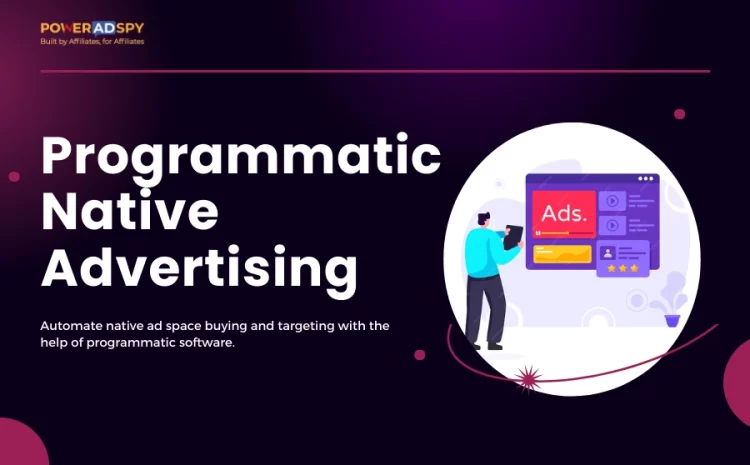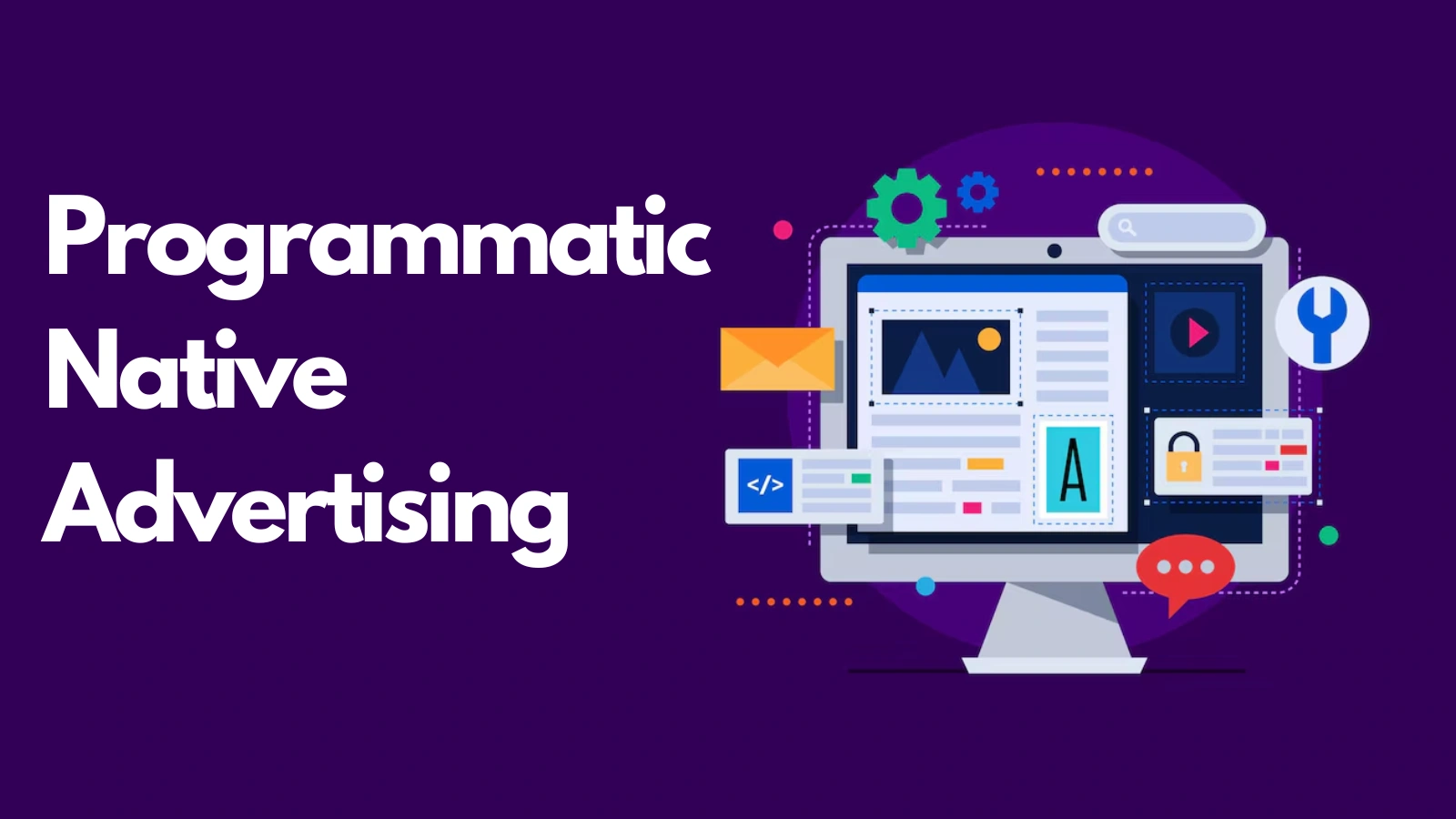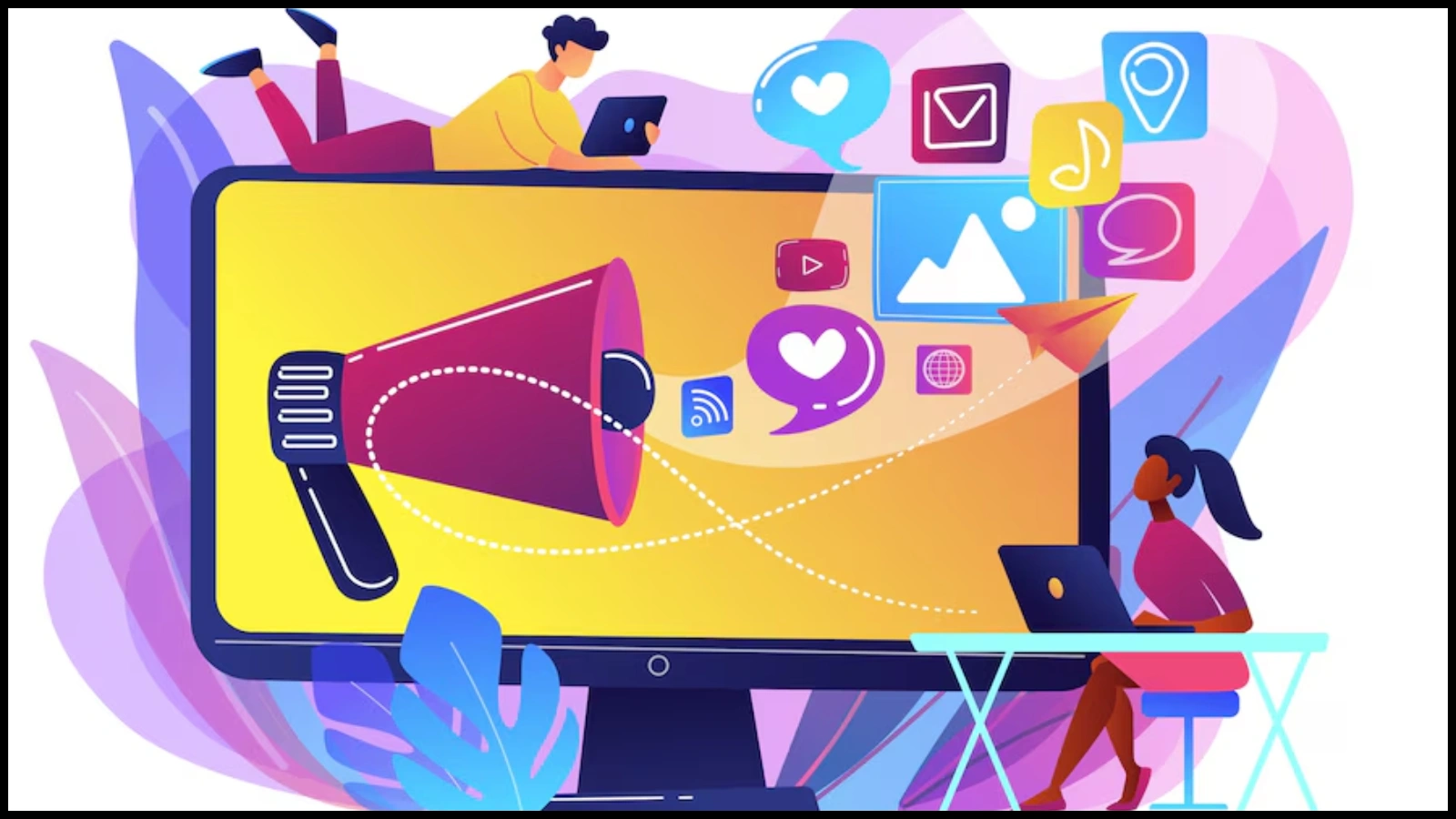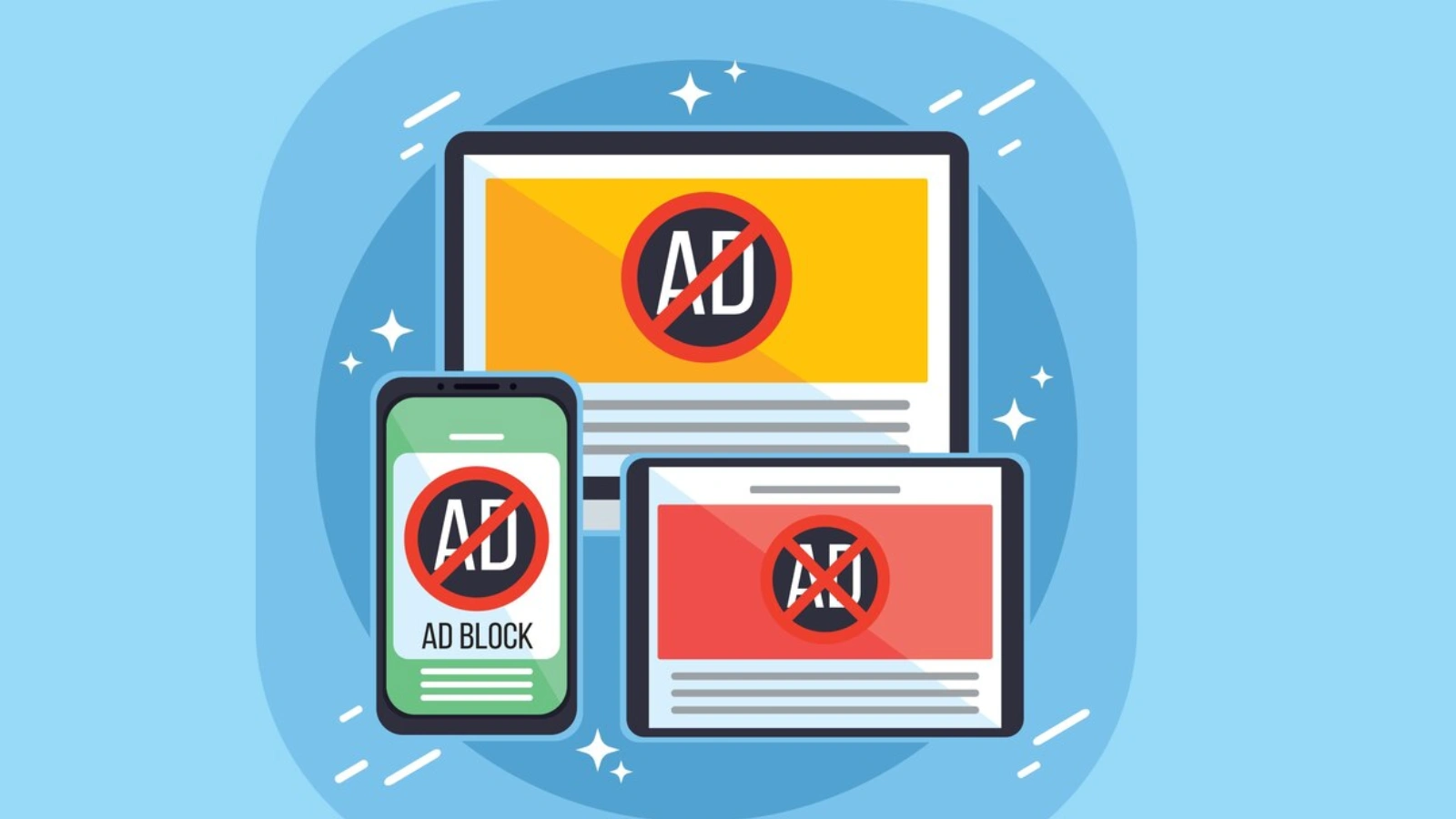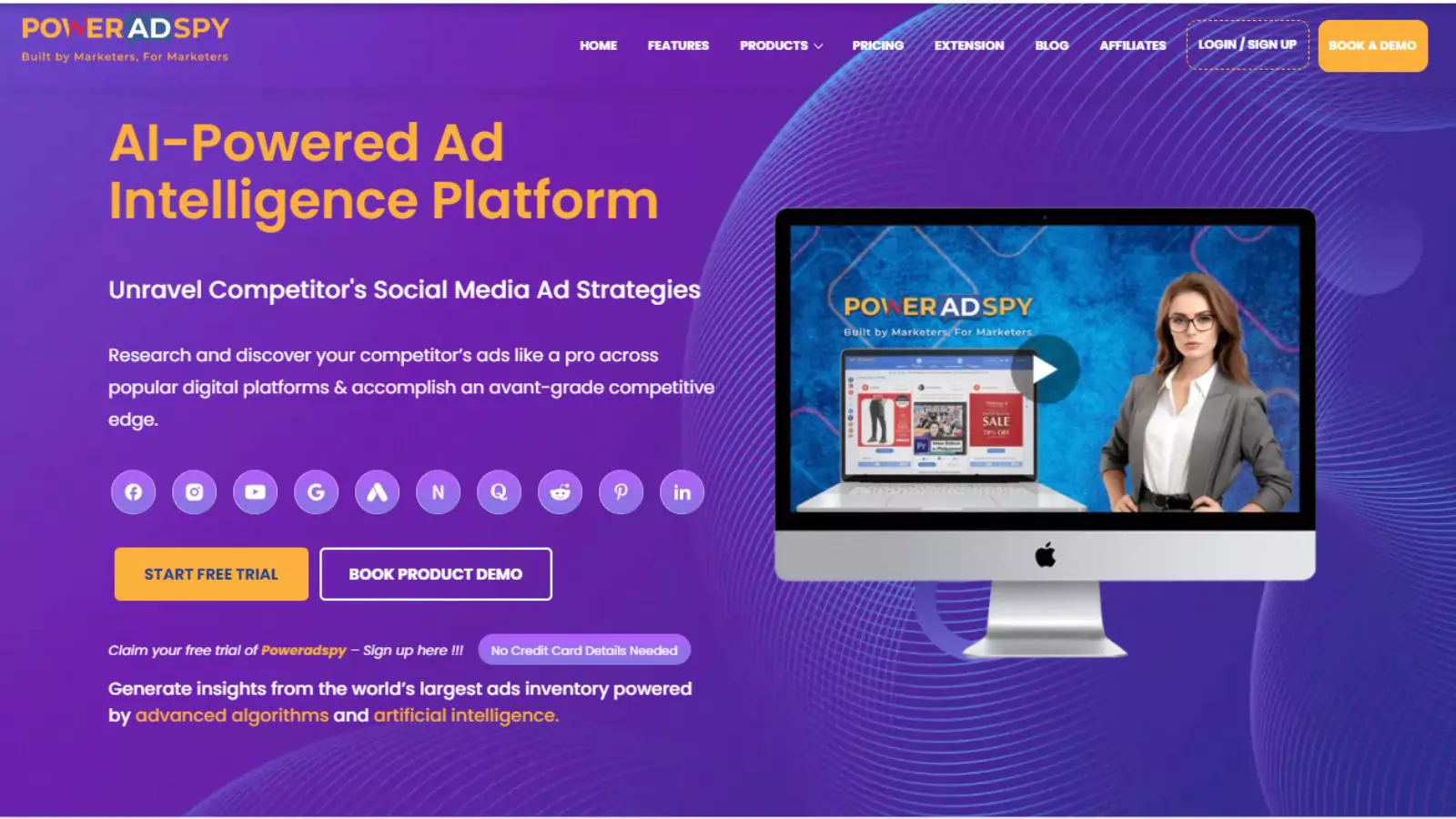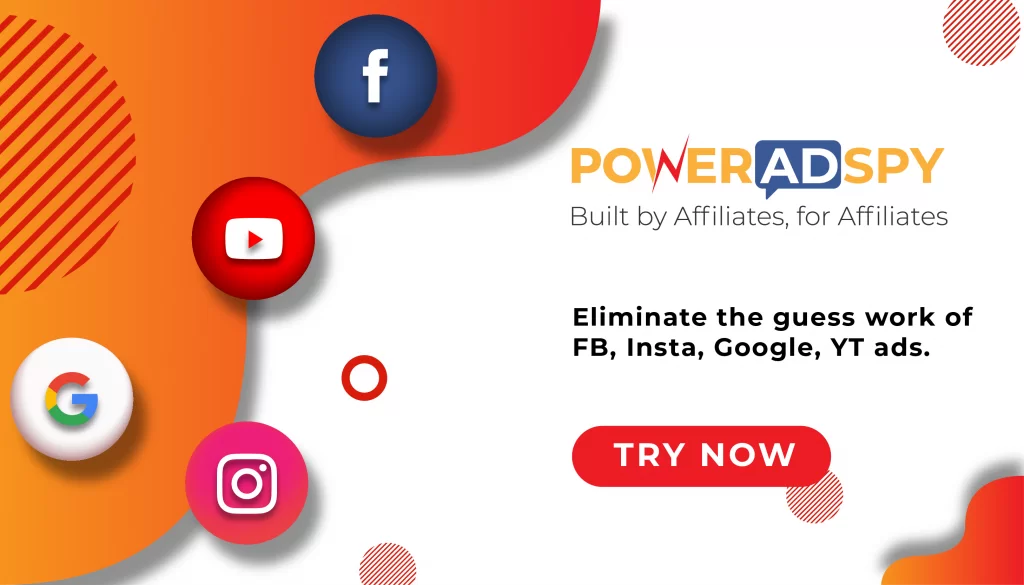The Ultimate Guide to Programmatic Native Advertising
Audiences are increasingly frustrated with disruptive online advertising. The main reason? Ads that interfere with the editorial content they came to see. This dissatisfaction has paved the way for a new trend: programmatic native advertising.
Programmatic native ads blend seamlessly with the content, offering a more natural and less intrusive experience. It is no surprise that digital marketers now allocate more than half of their digital ad budget to this method.
In this blog, we will delve into what programmatic native advertising is and how it can benefit your business. You will learn how to create ads that feel like a natural part of the user experience. We’ll also share some best practices to help you maximize your ad spend and engage your audience more effectively.
By the end of this blog, you’ll understand why programmatic native advertising is the future of digital marketing and how to leverage it for your brand. So, let’s begin.
Hit ‘Play’ Button & Tune Into The Blog!
What is Programmatic Native Advertising?
Programmatic native advertising is a modern approach to digital marketing that combines the elegance of native ads networks with the precision of programmatic advertising.
Programmatic advertising refers to buying ad space with automated technology instead of using more conventional (manual intervention) methods. Publishers that use supply-side platforms interface with buyers of ad space who use demand-side platforms through the ad exchange to issue a programmatic ad.
Native Advertising: It refers to ads that match the layout and functionality of the platform on which they appear. Making the advertisement appear “native” to the homepage is the aim. Users are more inclined to interact with the information as a result.
Programmatic native advertising is the union of native and programmatic advertising. This technique enables advertisers to automate the purchasing and targeting of native ad space using programmatic software.
Advertisers are launching into the next wave of technical advertising with native programmatic ads. They are no longer required to build personal ties with those who sell advertising space. Instead, everything is automated through programmatic technology, increasing the ad’s reach over enormous networks of websites. Ad Search tools like PowerAdSpy can help you easily search on those ads.
How Does Native Programmatic Advertising Work?
Native advertisements don’t appear like ads, unlike banners or display ads, so they don’t interfere with users’ ability to interact with the website. To post a native programmatic advertisement, advertisers undertake these four steps.
Planning and Setup
The first things that advertisers do are decide on their target market, budget, and creatives. This step is crucial as it lays the groundwork for the entire campaign. Making relevant and gripping advertising content requires understanding the tastes, behavior, and demographics of the target audience.
Selecting the Platform
Next, for their programmatic campaign, advertisers select a demand-side platform (DSP). With the DSP, ads are placed on websites where the target demographic is most engaged, and the purchase process is automated. Advertisers enter the DSP with their budget, demographic information, and ad creatives.
Bidding and Placement
The DSP communicates with ad exchanges to place real-time bids on ad placements. This automated bidding procedure places ads on the best websites to reach the intended audience. Programmatic native advertising is distinct in that the ad structure is adjusted to match the webpage’s layout, guaranteeing a smooth and unobtrusive user experience.
Optimization and Iteration
The performance of the campaign is regularly tracked once the advertisement is online. Click-through rates, engagement, and conversions are among the measures that advertisers use to assess the campaign’s effectiveness. They make the required modifications to maximize performance in light of this data.
This optimization process is made simple by automating machine learning in native programmatic ad systems. It guarantees that ads are continuously improved to better target audience segments.
Benefits of Programmatic Native Advertising
Designing creatives for native programmatic advertising requires significant effort. Instead of overly promoting banners, focus on creating original content. Ensure that any content shared on social media aligns with the publisher’s feed.
The long-term benefits of using native and programmatic advertising are numerous. These are some instances of how programmatic native advertising increases the number of viewable impressions.
Ad-Block Friendly
Ad blockers, which prohibit all banners and pop-ups on websites, are becoming increasingly popular among users due to intrusive marketing. Programmatic native advertising is invisible to ad blockers due to its natural appearance in widgets and other platforms.
Deliver Value
Innovative native advertisements offer more than just a product image. Usually, it’s an infographic, storytelling video, or explanation piece.
The only information you can glean from banner or display ads is about the products, but native advertising offers some fascinating insights. By employing a supply-side platform, premium publishers may use programmatic native advertising to provide relevant experiences in the proper context, improving story sequencing and bringing in higher yields from media buyers.
Higher Click-Through Rates
As programmatic native advertising uses relevant signals and machine learning, it often works better. They have a 40-fold higher click-through rate than conventional display ads. Native advertising draws the user in and presents fascinating content by fusing improved user experience with important marketing messaging.
Great for Brand Awareness
Typically, programmatic native advertising is presented as branded content. It functions best at the top of the funnel when clients realize they have an issue and seek fixes.
Programmatic vs Native Advertising
While both programmatic and native advertising aim to reach and engage target audiences, they do so in different ways. Programmatic advertising focuses on automation, efficiency, and precise targeting through data and algorithms. It excels in reaching specific audiences at scale with real-time adjustments.
On the other hand, native advertising prioritizes user experience and content integration, making ads less intrusive and more engaging by blending with the platform’s natural content.
Advertisers often use a combination of both strategies to maximize their reach and impact, leveraging the strengths of each approach to achieve their marketing goals.
Is Programmatic Native Advertising Wiping Out Banner Advertising?
Programmatic native advertising isn’t wiping out banner ads, but it’s changing the game. While banner ads are still widely used, native ads are gaining popularity because they blend in with the content, making them less intrusive and more engaging for users. People tend to interact more with ads that feel like a natural part of their browsing experience, leading to higher engagement rates for native ads.
Advertisers are increasingly choosing native ads for their ability to deliver better results and improve user experience. However, banner ads still have their place in digital marketing, particularly for brand awareness and reaching broad audiences quickly.
The rise of native programmatic advertising is more about offering new, effective options rather than eliminating banner ads. By providing a variety of ad formats, advertisers can tailor their strategies to different goals and audiences, ensuring a well-rounded and effective marketing approach.
Is Programmatic Native Advertising More Effective Than Banner Advertising?
Yes, programmatically purchased and deployed native advertising presents a valuable opportunity for businesses to leverage enhanced relevance and personalization. Advertisers benefit from improved performance as programmatic native advertising is customized for each user using machine learning and Contextual Advertising information.
When comparing native ads to banner ads, the benefits of native ads become clear.
- Consumers tend to pay more attention to native ads, resulting in higher engagement levels.
- Native ads generate significantly more clicks, indicating better user interaction.
- Native ads often lead to higher purchase intent, meaning users are more likely to consider buying a product or service after viewing a native ad. It makes native advertising a powerful tool for marketers aiming to increase engagement and drive sales.
Also Read:
6 Best Native Ads Networks To Expand Your Business
Top 7 Successful Display Ad Examples And Why They Work
Programmatic Native Advertising Best Practices
The effectiveness of programmatic native advertising depends on your ability to use it appropriately. These best practices should enable you to create innovative native ads and reap the full benefits of this kind of advertisement.
Avoid Hard Selling
Vibrant product descriptions and excessively promotional headlines are not the norm for native advertisements, which tend to avoid hard sales. Not to be outdone, we suggest providing genuinely relevant content through advice, anecdotes, and fascinating facts in your native advertising creative.
When crafting content, focus on providing valuable information that addresses users’ needs, such as tips and advice related to the topic. Incorporate your product naturally into the advice given, demonstrating its effectiveness in solving relevant problems.
This approach benefits the audience, who receives genuinely handy information, and the publisher, who gains more engagement and opportunities to showcase the product benefits. For customers further along in the buying process, direct sales tactics like coupons can be effective in native advertising formats.
Integrate It Into The Plan
Utilize more than just programmatic native advertising. To properly catch the audience at every stage of the customer journey, you can work with influencers, do content marketing, and provide equivalent banner ads. Every advertisement should complement the others to establish a successful marketing plan.
Experiment, Track, and Optimize
Allow plenty of space for programmatic native advertising to be experimented with. With this method, you can work with a variety of audiences, platforms, and content types.
Thus, be unafraid to experiment to see what works best for specific objectives (such as leads, sales, and brand exposure). Here, A/B testing operates differently from the norm. You must work with various material formats, including audio, video, articles, photographs, and searches, and test each separately.
One change at a time, evaluate the outcomes, maintain the successful adjustment, and go to the next one. Once the native advertisement is flawless, you may analyze various content kinds and determine which performs best.
You can also use various ad spy tools to spy on your competitor’s native ads. It allows you to optimize your ad strategy and boost your sales. Moreover, PowerAdSpy, one of the most efficient ad spy tools, lets you gain detailed analytics of the competitor ad campaigns. Let us have a look at what more this software offers.
PowerAdSpy – AI-based Ad Intelligence Tool
PowerAdSpy is a robust and reliable AI-based ad intelligence tool designed to empower advertisers with comprehensive competitor ad intelligence. This ad spy tool is very convenient for businesses that aim to discover a perfect ad strategy for their business.
PowerAdSpy allows advertisers to spy on various ad strategies to create the best-performing ads for their business.
Here are some of the vital features of PowerAdSpy that you can use in context with different types of advertisements.
Massive Ad Library
PowerAdSpy provides a vast database of millions of ads across 100+ countries, helping you to spy on your competitor’s ads easily. It empowers you to find the latest successful ads in just a few clicks.
Ad Search:
Users can search for ads based on keywords, advertisers, domains, or other criteria to find relevant ads within their niche or industry.
Ad Analytics:
This ad spy tool provides detailed analytics for ads, including engagement metrics, such as likes, shares, and comments, along with information about the ad performance and target audience demographics.
Targeting Insights:
The tool provides insights into the targeting options used in ads, such as demographics, interests, behaviors, and placements, helping users optimize their targeting strategies.
Ad Creatives:
It allows users to view ad creatives, including images, videos, and ad copy, to understand the competitor’s messaging and design strategies.
Bookmark the Best Ads
You can get detailed ad insights of the ad searches along with audience profiles on PowerAdSpy. It helps in intricately strategizing your ad. You can bookmark them with just a click, and they will be moved to your personalized Ads inventory.
PowerAdSpy can help advertisers check on their competitor ads on social media platforms. It allows them to focus on multiple key performance metrics and create an effective strategy for Google ad campaigns, leading to the maximized effectiveness of the ad campaign.
Conclusion
The marketing sector is embracing programmatic advertising techniques like never before. While switching to new methods can be intimidating, it will be beneficial in the long run. In just a few years, programmatic advertising will no longer be a novel concept drawing attention but rather a widely recognized facet of 21st-century advertising strategy.
By adopting innovative techniques like native programmatic advertising early on, you’re positioning yourself for future success. This proactive approach will pay off handsomely for your upcoming campaigns. Tools like Poweradspy can further enhance your strategy by providing valuable insights into competitors’ ads, helping you to stay ahead of the curve. Adopt these advancements now to ensure your brand thrives in the digital age.
Frequently Asked Questions
How is programmatic native advertising different from traditional display ads?
While native advertisements seamlessly blend with content, they can sometimes be more disruptive and noticeable compared to traditional display ads, which provide a less cohesive user experience. Automated technologies effectively and efficiently place programmatic native advertisements.
What platforms support programmatic native advertising?
Programmatic native advertising is supported by numerous large platforms, such as various publishers’ websites, social media networks (like Facebook and Instagram), and content recommendation platforms (like Taboola and Outbrain).
Can small businesses benefit from programmatic native advertising?
Yes, programmatic native ads have a lot to offer small businesses. Small enterprises can compete with larger companies and maximize their advertising costs by utilizing real-time campaign optimization and targeting specialized demographics.
What is the cost of programmatic native advertising?
The price of programmatic native advertising can vary significantly based on the platform, targeting options, and competition for ad space. Typically, advertisers use cost-per-thousand-impression (CPM) or cost-per-click (CPC) pricing models. Achieving a solid return on investment involves careful planning, monitoring performance, and budgeting effectively.

